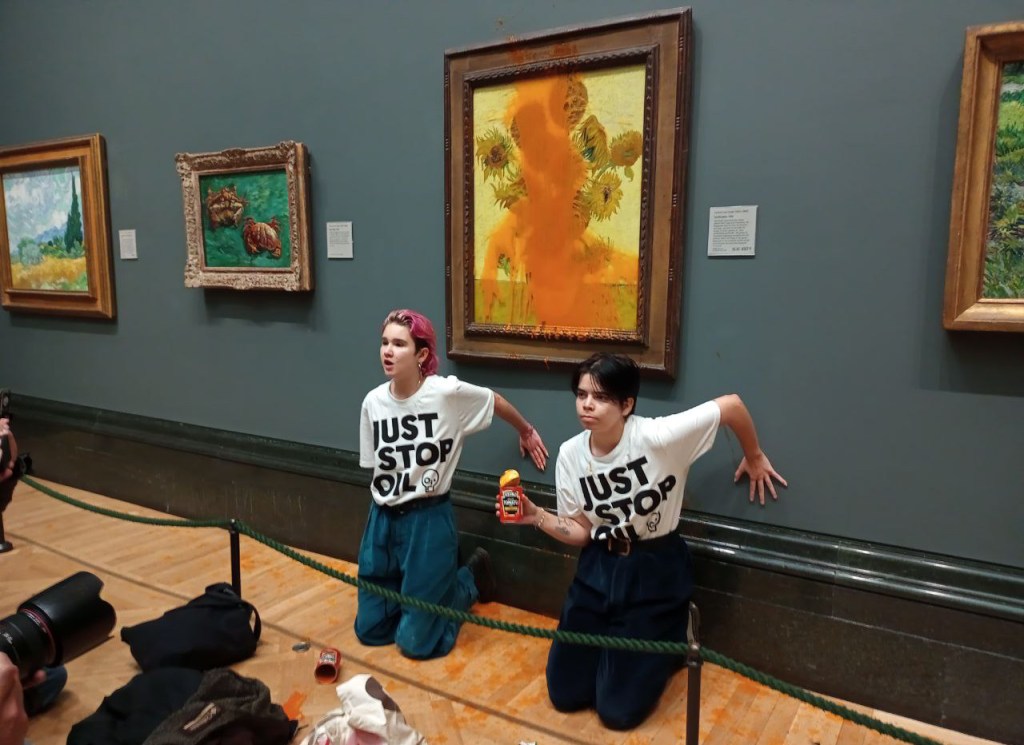Was tossing soup on a Van Gogh masterpiece an effective protest?

We’ve all seen clips of it by now. Two climate activists, belonging to a group called Just Stop Oil, throwing tomato soup on a painting by Van Gogh in London’s National Gallery—an act of protest meant to call attention to what they consider growing complacency and inaction on climate change.
“What is worth more, art or life?” one of the young activists says. “Are you more concerned about the protection of a painting, or the protection of our planet and people?”

And with that singular act, the art world, the Twittersphere and politicians of all stripes descended—with the velocity of hurled soup on a protective glass frame—into debate and outrage. The London incident comes amid an uptick in targeted art protests throughout Europe orchestrated by various activist groups.
Northeastern’s consulting curator, Amy Halliday, says protests like these beg the question: What is the “right” way to protest?
The question is worth asking, not least because the response was met with significant anger toward the protesters. For others, the act was met with confusion.
“Environmentalist groups have been employing all sorts of strategies for advocacy and policy change for decades, and very little seems to be changing,” Halliday says. “Sit-ins, street-blockages, or infrastructure interventions are too disruptive or inconvenient, petitions fall on deaf ears, targeted property damage to oil companies and sites garners scant media attention.”
It’s important to note: the painting, Van Gogh’s “Sunflowers,” was not damaged because it was behind glass—and the protesters themselves said they aren’t interested in destroying art to provoke a response.
Given the stakes of the climate crisis, Halliday says the soup-tossing teens may have achieved their aims, which is about drawing attention to, on the one hand, the outrage generated by the symbolic destruction of a beloved piece of art, and the collective indifference to the very real destruction of the environment happening every day.
“It may seem like art and soup and climate change have little to do with one another, but I think this form of protest is about activating people’s awareness of the hierarchies of value at play in contemporary Western society,” Halliday says.
Halliday notes that these protests are happening on the heels of recent efforts on the part of the U.K. government to curb the right to protest in England and Wales through the Police, Crime, Sentencing and Courts Act of 2022, which instituted harsher punishments in connection with a range of protesting activities the government sees as “highly disruptive and sometimes incredibly dangerous.”
Following a string of Just Stop Oil demonstrations that have also been largely symbolic, it’ll be interesting to see, Halliday says, if national art museums—which are free to enter in the UK and largely don’t require enhanced security checks—will or already have become “a staging ground for protest that’s increasingly restricted in streets and town squares.”
“Of course, the challenge here is that for all the attention this sort of action gets, it’s unclear if the climate crisis is then brought back to the forefront of conversation in productive ways,” she says.
For media inquiries, please contact media@northeastern.edu.





